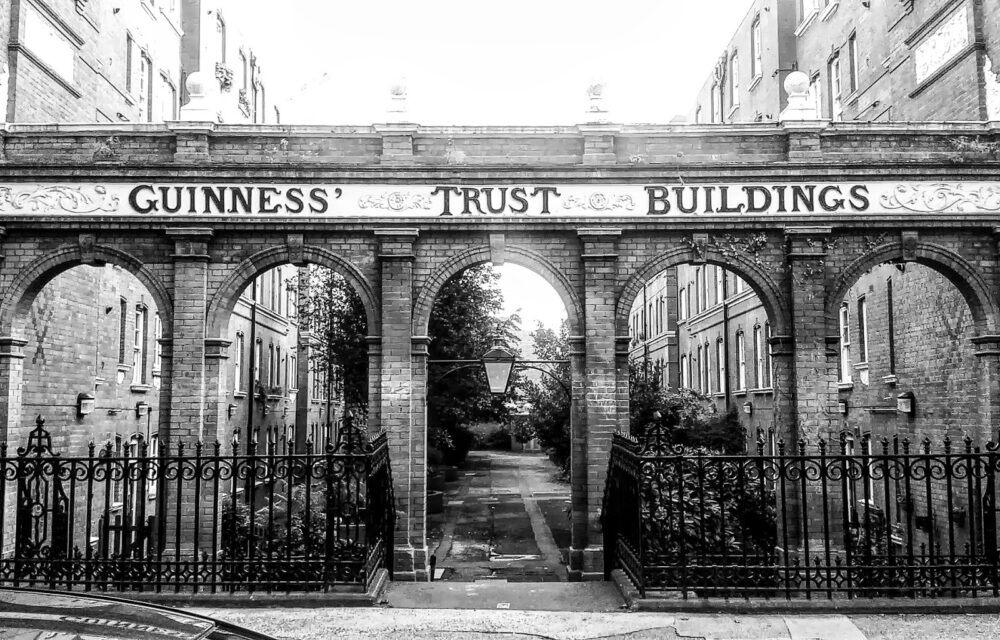The Victorians were a peculiar bunch. Frequently unable to communicate their emotions on a personal level, they found alternative means to do so.
The forefathers of the Industrial Revolution are a case in point. These industrialists expressed their gratitude to their workers via the means of bricks and mortar and thereby heralding the era of philanthropic housebuilding.
From the late 1800s/early 1900s, these philanthropic housebuilders lent upon many of the principles of the Almshouse model. They built homes and fostered communities aimed at nurturing a sense of pride.
Philanthropists like Angela Burdett-Coutts, George Peabody, George Cadbury and Andrew Carnegie turned their hand to housebuilding and delivered some of the UKs most cherished buildings in the process. From the Guinness Trust Mansion blocks in West London to Clock Tower Park in Liverpool, many of these buildings serve as symbols of civic pride today.
Take George Peabody. In 1862, he set up Peabody Donation Fund using his private fortune to provide housing for those who could afford only the lowest rents. The modest three percent return was ploughed back into the housing which took the form of flats in dense but well-built blocks many of which remain desirable today.
This principle of modest return was given the label “five percent philanthropy’. Although criticised by the likes of Engles who called the movement “proudhonist” the structure offered enough of an incentive for individuals to invest.
The last major development funded by a philanthropist was Silver End in Essex, a model village built by the industrialist Francis Henry Crittall in 1925. The end of the Second World War brought about wholesale change to how the nation delivered its homes and so ended the philanthropic housebuilding era. No longer was it seen fit for the industrialists to house the poor. It was for the state. In the 1930s, councils were responsible for around 25% of the homes built per year. By the 1940s & 50s that rose to a whopping 70%. It was needed. The nation’s shattered infrastructure needed a nurse and Councils and Government stepped up.
It might be said that philanthropists redirected their focus towards medicine, care and education. These sectors continue to dominate charitable contributions today. Currently, housing accounts for only 16% of total donations, significantly less than animal welfare (28%) and foreign aid (21%).
The past can tell us much about what can succeed. Should we encourage the likes of Jim Ratcliffe, Richard Branson and James Dyson to look towards building as an antidote to this countries woes? History tells us that such people have a role to play but first and most important is to educate on the benefits of housing. As obvious as this sounds, no other single factor can have such a defining effect on every measure or metric we use to assess someone’s quality of life.
Secondly, the government must do more to encourage private capital. As the Smith Institute pointed out, providing tax incentives to corporations and their foundations if their philanthropy is focused on the affordable housing sector could be a wise route to take for a new chancellor. Other countries use tax to incentivise private investment into house building, but here in the UK there is limited support.
Philanthropic house building will not solve the housing crisis but with a simple shift in attitudes and a more enticing environment for philanthropists, we could see a world where the Andrew Carnegies of today could do their bit to help deliver the homes this country needs.








